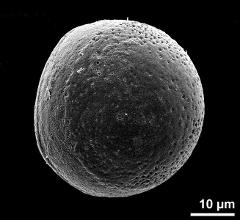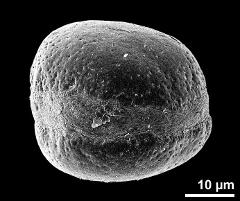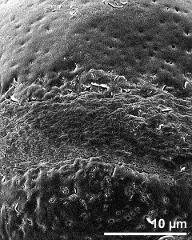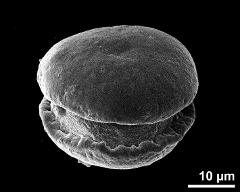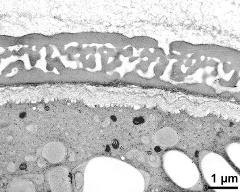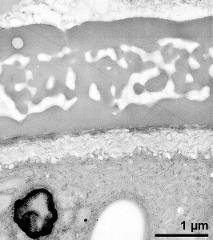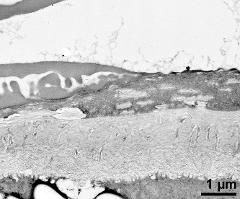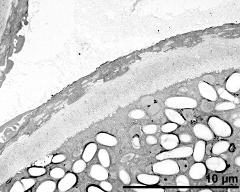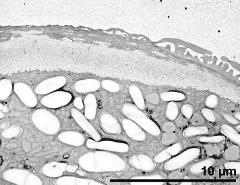Zamioculcas zamiifolia
Taxonomy: Angiospermae, Alismatales, Araceae, Zamioculcas
Published: 2016-11-03
Pollen Description
Shape, Size and Aperture
pollen unit: monad, dispersal unit and peculiarities: monad, size (pollen unit): medium-sized (26-50 µm), size of hydrated pollen (LM): -, shortest polar axis in equatorial view (LM): -, longest polar axis in equatorial view (LM): -, shortest diameter in equatorial or polar view (LM): -, longest diameter in equatorial or polar view (LM): -, pollen class: -, polarity: -, P/E-ratio: oblate, shape: -, outline in polar view: circular, dominant orientation (LM): -, P/E-ratio (dry pollen): oblate, shape (dry pollen): -, outline in polar view (dry pollen): circular, infoldings (dry pollen): aperture(s) sunken, aperture number: 1, aperture type: ring-like aperture, aperture condition: -, aperture peculiarities: -
Ornamentation and Structure
LM ornamentation LM: psilate, nexine: -, sexine: -, SEM ornamentation SEM: psilate, perforate, suprasculpture SEM: -, TEM tectum: eutectate, infratectum: alveolate, foot layer: continuous, endexine: spongy-continuous, intine: monolayered, wall peculiarities: -, supratectal element: -
Miscellaneous
pollen coatings: absent, reserves in cytoplasm: starch, cell number: -, Ubisch bodies: absent
Annotations: endexine very thin
Author(s) of diagnosis: Halbritter, Heidemarie; Weber, Martina
Pictures
Picture legend
- polar view - fresh, rehydrated (water) & critical point dried & sputter coated with gold, photographer: Halbritter, H.
- equatorial view - fresh, rehydrated (water) & critical point dried & sputter coated with gold, photographer: Halbritter, H.
- detail of aperture - fresh, rehydrated (water) & critical point dried & sputter coated with gold, photographer: Halbritter, H.
- dry pollen grain - dry, sputter coated with gold, photographer: Halbritter, H.
- pollen wall - fresh, glutaraldehyde & osmium & potassium ferrocyanide, uranyl acetate & lead citrate, photographer: Weber, M.
- detail of pollen wall - fresh, glutaraldehyde & osmium & potassium ferrocyanide, uranyl acetate & lead citrate, photographer: Weber, M.
- pollen wall at transition of aperture and interapertural region - fresh, glutaraldehyde & osmium & potassium ferrocyanide, uranyl acetate & lead citrate, photographer: Weber, M.
- detail of pollen wall at aperture - fresh, glutaraldehyde & osmium & potassium ferrocyanide, uranyl acetate & lead citrate, photographer: Weber, M.
- detail of pollen wall at aperture - fresh, glutaraldehyde & osmium & potassium ferrocyanide, uranyl acetate & lead citrate, photographer: Weber, M.
Literature
- (1998) Preparing living pollen material for scanning electron microscopy using 2,2-dimethoxypropane (DMP) and criticalpoint drying. Biotechnic Histochem 73: 137–143
Copyright and Citation
Cite this publication as:
Halbritter H., Weber M. 2016. Zamioculcas zamiifolia. In: PalDat - A palynological database. https://pc8.botanik.univie.ac.at/pub/Zamioculcas_zamiifolia/301855;jsessionid=14C2939668DF0B0F80436A4975C3AF0F; accessed 2025-01-25

